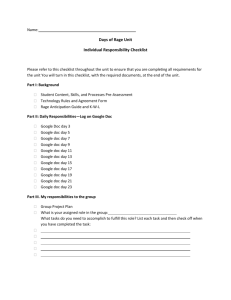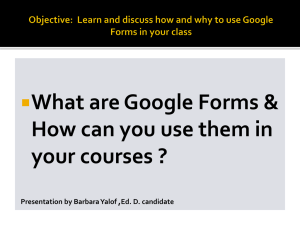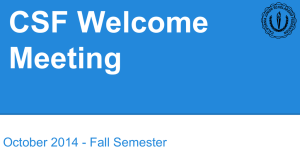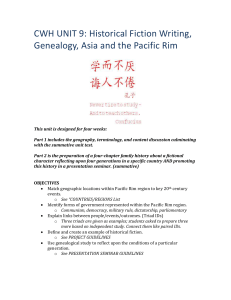11 Steps to Great Follow Up
advertisement
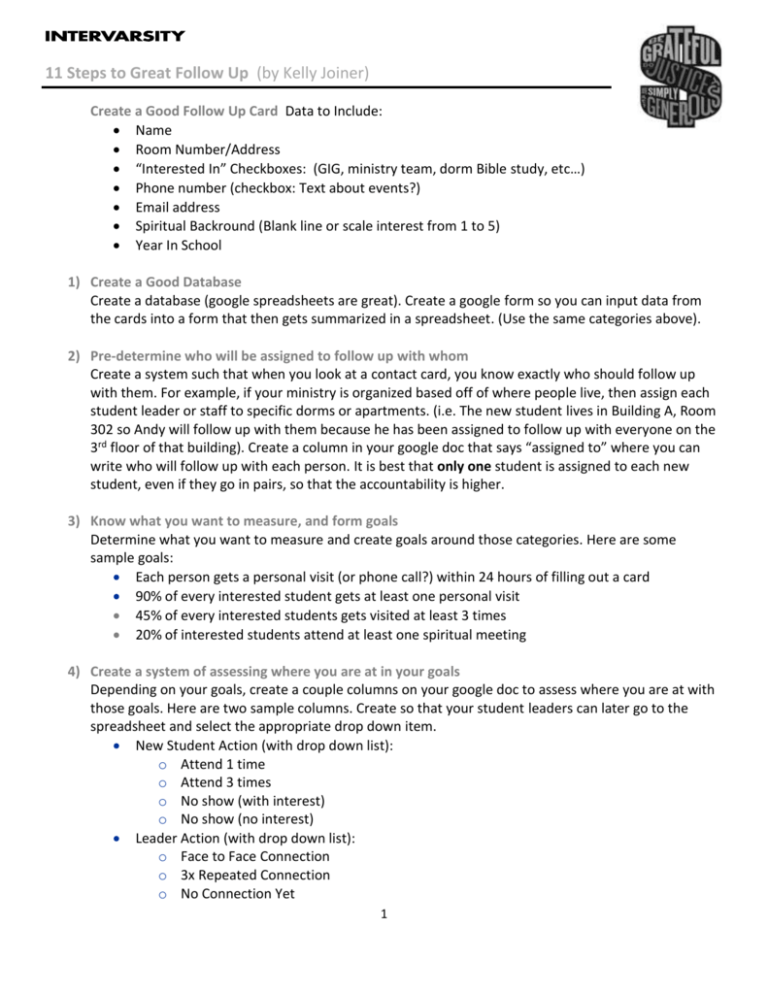
11 Steps to Great Follow Up (by Kelly Joiner) Create a Good Follow Up Card Data to Include: Name Room Number/Address “Interested In” Checkboxes: (GIG, ministry team, dorm Bible study, etc…) Phone number (checkbox: Text about events?) Email address Spiritual Backround (Blank line or scale interest from 1 to 5) Year In School 1) Create a Good Database Create a database (google spreadsheets are great). Create a google form so you can input data from the cards into a form that then gets summarized in a spreadsheet. (Use the same categories above). 2) Pre-determine who will be assigned to follow up with whom Create a system such that when you look at a contact card, you know exactly who should follow up with them. For example, if your ministry is organized based off of where people live, then assign each student leader or staff to specific dorms or apartments. (i.e. The new student lives in Building A, Room 302 so Andy will follow up with them because he has been assigned to follow up with everyone on the 3rd floor of that building). Create a column in your google doc that says “assigned to” where you can write who will follow up with each person. It is best that only one student is assigned to each new student, even if they go in pairs, so that the accountability is higher. 3) Know what you want to measure, and form goals Determine what you want to measure and create goals around those categories. Here are some sample goals: Each person gets a personal visit (or phone call?) within 24 hours of filling out a card 90% of every interested student gets at least one personal visit 45% of every interested students gets visited at least 3 times 20% of interested students attend at least one spiritual meeting 4) Create a system of assessing where you are at in your goals Depending on your goals, create a couple columns on your google doc to assess where you are at with those goals. Here are two sample columns. Create so that your student leaders can later go to the spreadsheet and select the appropriate drop down item. New Student Action (with drop down list): o Attend 1 time o Attend 3 times o No show (with interest) o No show (no interest) Leader Action (with drop down list): o Face to Face Connection o 3x Repeated Connection o No Connection Yet 1 5) Delegate a team for Data Entry and give them clear deadlines Assign 3 to 5 people to be your data entry team. After each event or proxe, tell them to enter the data from the contact cards into the google doc immediately after your event is over. Then make sure that your “assigned to” column gets filled out within just a few hours after your event so that every leader knows exactly with whom they are expected to follow up. 6) Determine who gets priority follow up and how Certain people should get higher priority in follow up, perhaps because they aren’t Christian or because they are from a minority culture on campus and will take less self-initiative in getting connected. These people should be separated out somehow. A few ways to do this is to: Highlight their names on the google doc Assign a separate point person to quickly follow up with each of these people Have the person who talked with them at the proxe call them within 6 hours of having met them. 7) Train Proxe leaders in what to do with follow up cards Each leader at the proxe should know exactly what to do when they get a contact card. After the interested student has left, the leader should write their name on the back of the contact card along with any relevant information from their conversation. If the leader desires to follow up with that person directly, note that on the back of the card as well. ALL contact cards should be turned into the same location. If a leader wants to keep a phone number or email for themselves, they should copy that down on a separate paper. The main thing is that ALL contacts get put in one place so they can be inputted into the google doc. 8) When assignments change from one leader to another… Sometimes a new student will connect with someone who was not the original person assigned to follow up with them. (i.e. Andy is assigned to follow up with Tanya but Tanya ends up going to Jessica’s small group instead of Andy’s). There needs to be a system for “passing off” this contact. If this is the case, then it is the responsibility of the person “taking” the contact card to update that on the google doc. (i.e. Jessica is responsible to connect to Andy and update the google doc to say that she is now responsible for following up with Tanya). 9) Determine how and when you will use the follow up doc for evaluation of goals What will you do with the data that you receive from the google doc? Who will regularly examine it? How will you debrief quantitatively as well as qualitatively? How will you use it to help you see where God is working and how you are growing together in follow up? 10) Train Actual Follow Up Conversations Probably the MOST important thing is to help your leaders know what to do once they are assigned to follow up with somebody. Have them role play what they will do when they visit someone’s room or make a phone call. How can they make a great invitation to InterVarsity as well as communicate that they want to get to know that person better? Be VERY specific about what you want them to do when they connect with someone. How long should they visit with them? What should they say? How should they pray before and after the visit? 2


